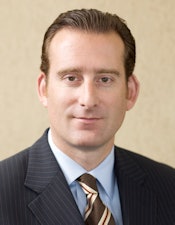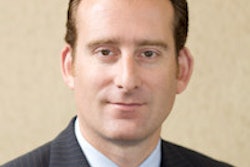
This article from Heritage Financial Consultants draws on the same core materials that are included in the management consulting program for Levin Group clients. By gaining a deeper understanding of their financial situation and the options available to them, dentists can make informed decisions that will enable them to reach their retirement goals sooner.
— Roger P. Levin, DDS
Historically, many dentists don't think about taxes until they're facing the April 15 deadline. But by then, it's too late to do any productive planning.
 John G. McCarthy III is a partner with Heritage Financial Consultants.
John G. McCarthy III is a partner with Heritage Financial Consultants.One of the best ways to save on income taxes is to max out your 401(k). You can contribute up to $18,000 to your 401(k) in 2015 and, if you are older than age 50, you can make an additional "catch-up" contribution of $6,000. But this is just the beginning. At the end of the year, you should sit down with your financial planner to review the "nuts-and-bolts" that can impact taxes -- for example, estimated tax payments, the sale of a residence, and distributions from qualified plans or IRAs.
In addition, reviewing your estate plan may help reveal some additional tax-reduction strategies appropriate to your situation.
For example, one thing that could help save taxes is to shift passive income-producing assets such as rental real estate to a family limited liability corporation (LLC) or a family limited partnership (FLP).
Gifting can also be a sound tax-savings strategy for dentists. Instead of giving cash to a charity, consider gifting appreciated assets. You don't have to pay any tax on the gain and neither does the charity. You get the deduction for the gift subject to certain limitations and you eliminate the capital gains tax.
The stealth tax
“Gifting can also be a sound tax-savings strategy for dentists.”
Under the alternative minimum tax (AMT), often referred to as the "stealth" tax, you lose parts of certain deductions -- medical expenses, interest on second mortgages, state and local taxes, and charitable gifts among them -- once your adjusted gross income reaches a certain level.
The highest federal income tax rate is 39.6%; the highest AMT is 28%. In tax preparation, your income is run through both calculations and you pay whichever one is higher. So, for example, if your federal tax is $90,000 and the AMT is $100,000, you pay $90,000 federal tax and $10,000 for AMT. To be strategic about taxes, try to balance your ordinary federal income tax with your AMT tax amount.
Think about the future
The popular 529 college savings plans have emerged as terrific college funding planning tools for families who can front-load up to five years' worth of contributions per child. Under a special election, a 529 account owner can choose to front-load up to $70,000 per beneficiary, or $140,000 for married couples, into the college savings plan without generating a taxable gift -- assuming no other gifts are made to the beneficiary over the five-year timeline.
John G. McCarthy III is a partner with Heritage Financial Consultants and a registered representative of Lincoln Financial Advisors. Heritage Financial Consultants is not an affiliate of Lincoln Financial Advisors. Lincoln Financial Advisors does not provide legal or tax advice.
Disclaimer: The comments in this article are not meant to be taken as financial advice. Levin Financial Group recommends that you always consult with your financial planner before making any significant changes in your financial situation.
The comments and observations expressed herein do not necessarily reflect the opinions of DrBicuspid.com, nor should they be construed as an endorsement or admonishment of any particular idea, vendor, or organization.



















